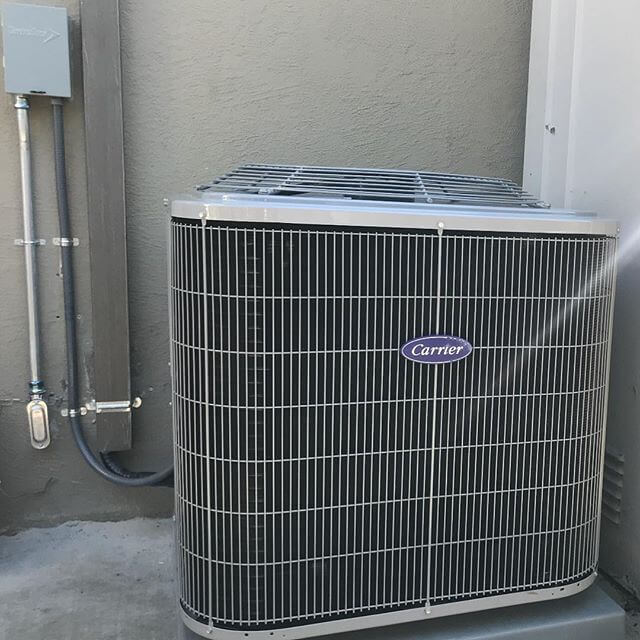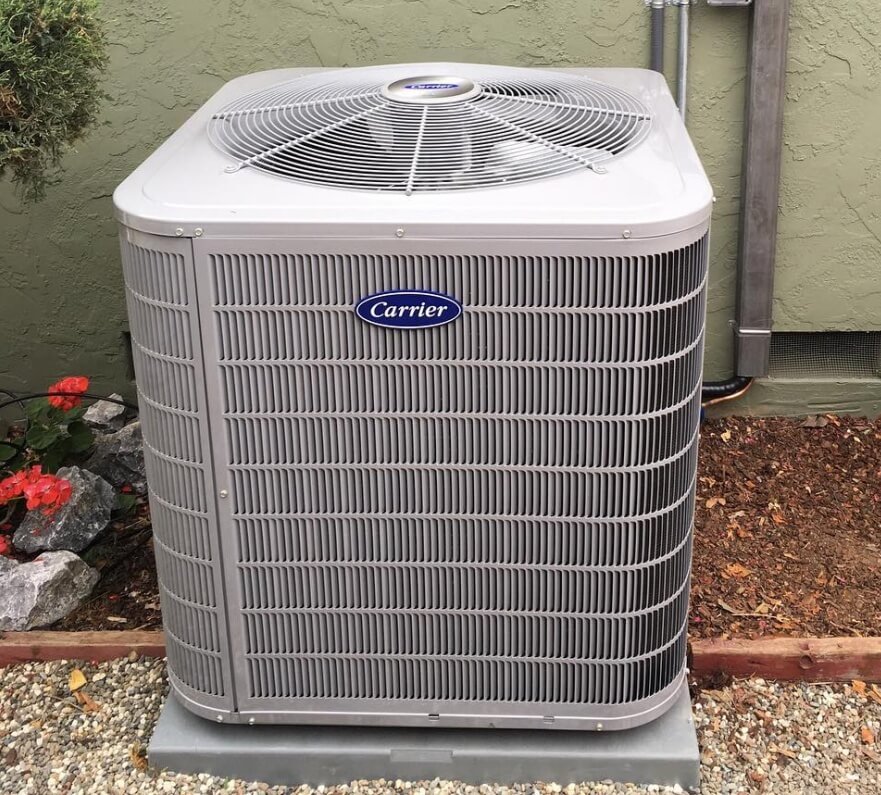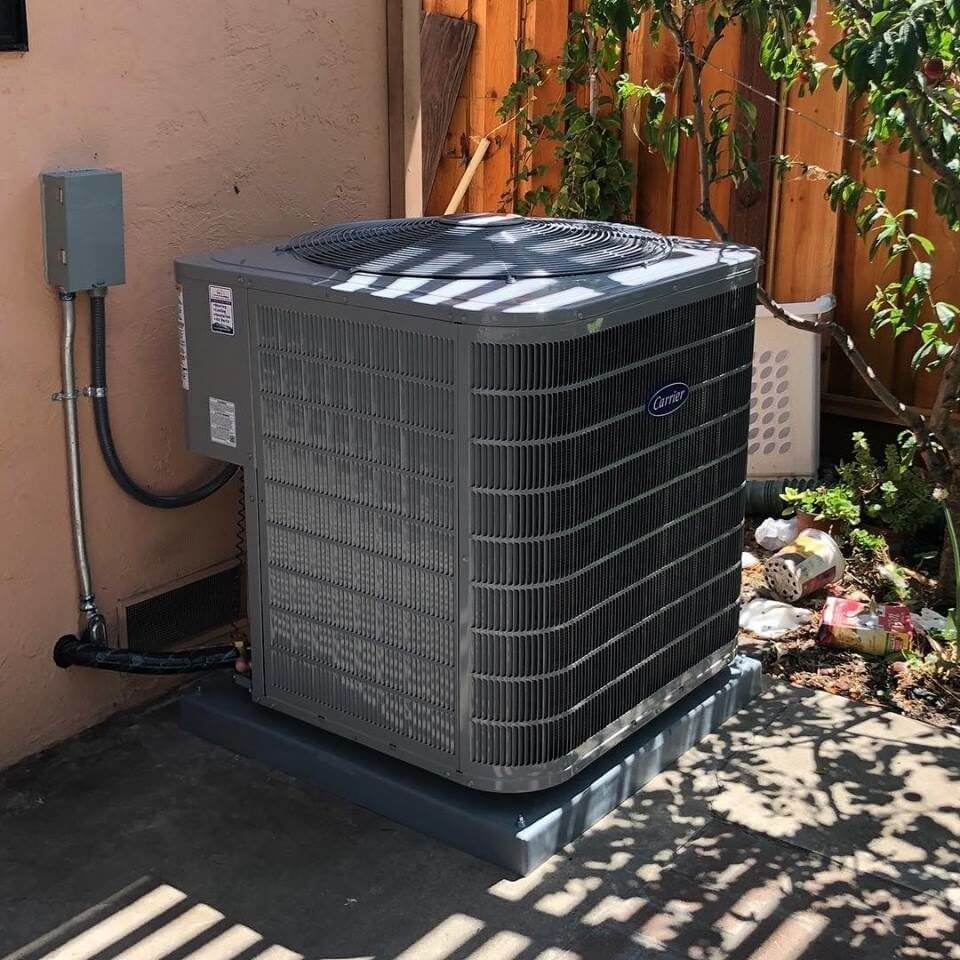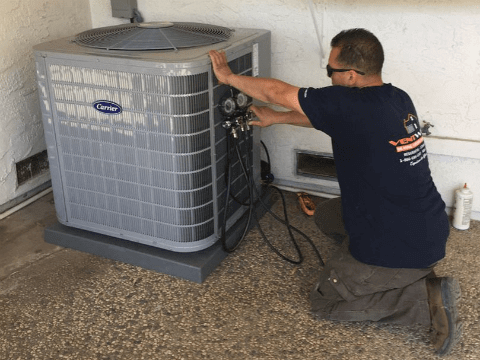Central Air Conditioning Buying Guide (2024)
What Factors Should You Consider When Buying a Central Air Conditioner?
75% of home in the US use air conditioning, and 75% of those homes have central air.
Central air conditioners are popular because they deliver more cooling power per square foot for the money than regular air conditioners.
Whether you are purchasing a central air conditioner for the first time, or replacing your current AC unit, this guide is deigned to help you make an educated buying decision. Air conditioning units usually last between 10 and 15 years, as opposed to furnaces, which generally last between 20 and 30 years.
There are many factors to consider when buying a central air conditioner – size, price, energy efficiency, warranty, ongoing maintenance, and energy rebates, to name a few.
Table of Contents
- How Do Central Air Conditioners Work?
- How the Indoor Air is Cooled
- Central Air vs Heat Pumps – What’s the Difference?
- Types of Central Air Conditioning Systems
- Considerations for Buying a Central Air Conditioning System
- SEER Rating
- Size of the Air Conditioning Unit in BTU
- Consider the Local Climate
- Pricing and Efficiency
- Programmable Thermostats
- Warranties
- Rebates and Financial Incentives
- Choosing a HVAC Contractor
- Maintaining Your Central Air Conditioner
- Final Thoughts
How Do Central Air Conditioners Work?
There are a few components that all central air conditioners have: a condenser unit (with a compressor), an air-handling unit with a blower, an evaporator, and a system for exchanging hot indoor air with chilled air.
Supply and return openings move cool air from the air conditioner through the home. As the air becomes warmer indoors, the warm air flows back into the central air conditioner.
The condenser unit usually sits outside on a concrete slab, or on the roof, and contains the condenser and compressor. In packaged central air conditioners, the evaporator may also be placed in the condenser unit. In split systems, and non-packaged central air conditioning units, the evaporator is indoors. Ductwork or air handling lines distribute cooled air to the different rooms in the house.
How the Indoor Air is Cooled
In the evaporator unit, usually placed indoors, arm air from inside the house passes through an intake with an air filter. This air passes over cooling coils which remove heat and humidity from the air using refrigerant. A fan blower, placed over the evaporator, disperses the cooled air inside the house.
Meanwhile, in the outside condenser unit, in the condenser unit, heat is transferred from coils to the outside. A compressor moves refrigerant between the evaporator and condenser to chill the indoor air. A fan releases warm air to the outdoor air.
This is all a complex way to say that indoor heat is transferred to the outside.
Here is a PDF and infographic that explains in detail how this process works.

Central Air vs Heat Pumps – What’s the Difference?
A heat pump differs from a central air conditioner in one way. Heat pumps are essentially central air units that can be reversed in the winter to move heat indoors, instead of extracting heat from the home and moving it outdoors.
A heat pump has a valve that reverses the flow of refrigerant, allowing the unit to either heat or cool the home.
Heat pumps extract heat from the outdoor air, moving it into the house. In colder climates, there comes a point where the heat from the outside air is insufficient to heat the indoor home, so a backup heat source, like a furnace, is necessary.
Types of Central Air Conditioning Systems
There are two main types of central air conditioners, packaged and split-system.
Packaged Central Air Conditioners.
In a packaged central air conditioner, the condenser, compressor, and evaporator are usually housed together in an outdoor unit. The cooled air is usually circulated through the home using ductwork. The advantage of packaged air conditioners is they provide even cooling throughout the house.
Split -System Air Conditioners.
Split systems usually have the condenser and compressor in an outside unit. An indoor unit is oftentimes connected to a heat pump or furnace. The evaporator coil is usually contained in the cabinet or supply air duct of the furnace or heat pump. The indoor unit is usually mounted to the wall in each room. One main advantage of ductless split-systems is you can cool specific rooms. Split-systems cost a bit more than packaged air conditioning units. They are a good option for homes that do not have existing ductwork. Split-systems and mini-splits also work well in all climates.
SEER Rating
The US Department of Energy developed a system for rating the efficiency of an air conditioning system. The higher the number, the more efficient the cooling versus the cost of the unit.
This rating is called SEER, or Seasonal Energy Efficiency Ratio. The SEER rating of each air conditioning unit is displayed on the Energy Star label.
The SEER rating of an air conditioner is calculated its cooling capacity in BTUs during a given season, divided by the electric wattage needed to cool the air during the same period.
SEER only takes seasonal use into account, not year-round use. This number is calculated as BTU / wattage, but with an 82 °F outside temperature.

High-efficiency air conditioners usually have a minimum of 16 SEER and 13 EER.
To be labelled as an Energy Star unit, a central air conditioning system must have a 12 EER rating (for split-systems) and an 11 EER rating (for package units).
Ducted central air conditioning systems can currently reach a peak of about 21 SEER.
As the efficiency goes up beyond 16 SEER, the price also goes up accordingly.
Size of the Air Conditioning Unit in BTU
One thing that may be confusing when you are shopping for a new central air conditioner is how the size is referenced. An air conditioner’s cooling capacity is measured in a size known as British thermal units per hour (BTU). This is sometimes referred to as “tons” – which doesn’t refer to the weight of the unit, but the BTU/hour, or cooling power. One ton of cooling power equals 12,000 BTU/hr.
Your HVAC contractor should inspect the interior and layout of your home, as well as the raw square footage. They will use this information to make a recommendation for the proper sized AC system.
If your central air conditioning system is too large, it will cycle on and off throughout the day, which can waste electricity. When the central air conditioner is too small, it will not be able to sufficiently cool your home.
Make sure your central air conditioner system is sized correctly. There is more to consider than the just the square footage of your home! Be sure to choose a contractor who will size your central AC system according to Manual J, a standard developed by the Air Conditioning Contractors of America (ACCA).

Pricing and Efficiency
Ultimately, your best course of action is to buy an energy-efficient central air conditioner which will save you energy and cooling costs. How much money you will save over time, and how much money you should invest depends on several factors, like the overall climate of your area, and the square footage and layout of your home.
Other factors to consider are the age of your current air conditioning unit and whether you need to install or replace ductwork in your home. If you do not currently have ductwork in your home, it may make more sense to buy a split-system air conditioning unit. If your current central air system is older, it may make sense to replace the outside condenser and compressor unit.
Central air conditioners built today use 30% to 50% less energy for the same amount of cooling as systems built in the mid-1970s. Even AC units built as recently as the early-2000s expend as much as 20% to 40% more energy for the same cooling power as AC systems built today.
Programmable Thermostats
Using a programmable thermostat can reduce your cooling costs by up to 10 percent. By automating the temperature control, it makes it easier to keep heating and cooling costs consistent.
Warranties
The warranty on your air conditioning unit will help keep it running for many years to come. Before you buy an air conditioning unit, be sure to read the warranty in full, and make sure you understand the terms and restrictions. Warranties can vary by manufacturer. Some warranties cover most of the AC unit, while other may only cover specific parts. A 10-year warranty on the compressor and five years on the remaining parts is normal. Some models may offer a lifetime warranty on the compressor, which is the most expensive part of most central air conditioning systems.
Rebates and Financial Incentives
Depending on what state you live in, there may be various financial incentives for homeowners for purchasing energy-efficient heating and cooling units. In California, you may qualify for the Energy Upgrade California™ program, which includes rebates for certain upgrades and energy-efficient equipment.
As a proud participating Bay Area contractor in the Energy Upgrade California program, Ventwerx can help you find the right package for you, and make sure you fulfill the criteria of the energy upgrade program.
For a list of nationwide rebates and energy incentives, visit https://www.dsireusa.org/.
Choosing a HVAC Contractor
Always make sure your air conditioning contractor is licensed, bonded, and insured. Good contractors will usually have a stellar record and reputation. They may also be part of a professional contracting organization.
HVAC contractors who submit a bid on your job should calculate the necessary cooling capacity by using a recognized methodology, such the ACCA’s Residential Load Calculation Manual, aka Manual J. If they are assessing ductwork, this should be assessed using the ACCA’s Manual D. These manuals produce a room-by-room analysis and calculation of cooling needs. Make sure they give you a printout of all calculations and estimates, including any ductwork. If your contractor produces estimates based only on rough square footage or a “rule of thumb” – run. These contractors are not following best practices agreed upon by the Air Conditioning Contractors of America organization.

Buying Tactics
It is wise to get bids from at least three different contractors. Talk to each and see what their methodology looks like. Be sure to get their license number and insurance information.
Be cautious of extremely low bids. You get what you pay for. If a bid seems too good to be true, it could be because your contractor is cutting corners to save money on the bid.
Get the details in writing before work begins. Get the model numbers, project costs, timetable, and warranties in a contract before the HVAC contractor begins their work.
Maintaining Your Central Air Conditioner
Many air conditioning manufacturers recommend annual maintenance on your central AC system. Energy Star recommends an annual tune-up on your central air conditioning unit. The best time to plan this is in the spring, before the weather starts to heat up.
During the service call, the HVAC technician should change all the filters, clean out the blower compartments, flush the coils, and drain the pan and drainage system. After the AC cleaning, your HVAC technician should make sure all the parts are working correctly. This includes checking electrical connections, lubricating internal moving parts, and measuring the airflow over the indoor evaporator coil. If the airflow is at the proper level, it can improve the air conditioners efficacy from 5% to 15%.
Keep plats, hedges, and foliage at least two feet away from the outside condenser unit. This will prevent the airflow and outside coils from being blocked.
Final Thoughts
Purchasing a central air conditioning system is a big decision. Do your research before buying a new air conditioning system. Here at Ventwerx, we usually recommend Carrier air conditioning units for packaged central air conditioning systems, and Fujitsu units for split-systems, ductless HVAC systems, and mini-splits. Check the credentials of your local heating and cooling contractor and always get their insurance and license information.